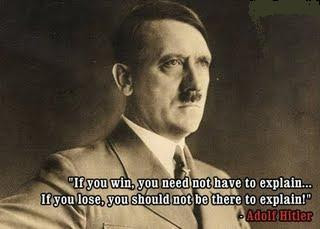Rather than the two lists, OPEN and CLOSED,
that were used in the A* algorithm, the AO* algorithm will use a single structure GRAPH, representing the part
of the search graph that has been explicitly generated so far. Each node in the graph will point both dow
immediate successors and up to its immediate predecessors. Each node in the graph will also have associated
with it an h' value, an estimate of the cost of a path from itself to a set of solution nodes. We will not store g (the
cost of getting from the start node to the current node) as we did in the A* algorithm. It is not possible to
compute a single such value since there may be many paths to the same state. And such a value is not nec
because of the top-down traversing of the best-known path, which guarantees that only nodes that are on the
best path will ever be considered for expansion. So h' will serve as the estimate of goodness of a node.
Algorithm: AO*
Let GRAPH consist only of the node representing the initial state. (Call this node INIT.) Compute
h'(INIT).
1.
Until INIT is labeled SOLVED or until INIT's h' value becomes greater than FUTILITY, repeat the
following procedure:
2.
Trace the labeled arcs from INIT
and select for expansion one of the as yet unexpanded nodes that occurs on this path. Call the
selected node NODE.
a.
Generate the successors of NODE. If there are none, then assign FUTILITY as the h' value of
NODE. This is equivalent to saying that NODE is not solvable. If there are successors, then for
each one (called SUCCESSOR), do the following:
b.
i. Add SUCCESSOR to GRAPH.
ii. If SUCCESSOR is a terminal node, label it SOLVED and assign it an h' value of 0.
iii. If SUCCESSOR is not a terminal node, compute its h' value.
Propagate the newly discovered information up the graph by doing the following: Let S be a set of
nodes that have been labeled SOLVED or whose h' values have been changed and so need to have
values propagated back to their parents. Initialize S to NODE. Until S is empty, repeat the following
procedure:
c.
If possible, select from S a node none of whose descendants in GRAPH occurs in S. If there is
no such node, select any node from S. Call this node CURRENT, and remove it from S.
i.
Compute the cost of each of the arcs emerging from CURRENT. The cost of each arc is equal
to the sum of the h'
values of each of the nodes at the end of the arc plus whatever the cost of the arc itself is.
Assign as CURRENT's new h'
value the minimum of the costs just computed for the arcs emerging from it.
ii.
Mark the best path out of CURRENT by marking the arc that had the minimum cost as
computed in the previous step.
iii.
.
Mark CURRENT SOLVED
if all of the nodes connected to it through the new labeled arc have been labeled SOLVED.
iv.
If CURRENT has been labeled SOLVED or if the cost of CURRENT was just changed, then
its new status must be propagated back up the graph. So add all of the ancestors of
CURRENT to S.
v.
It is worth noticing a couple of points
about the operation of this algorithm. In step 2(c)v, the ancestors of a node whose cost was altered are added to
the set of nodes whose costs must also be revised. As stated, the algorithm will insert all the node's ancestors
into the set, which may result in the propagation of the cost change back up through a large number of paths that
are already known not to be very good. For example, in Figure 3.11, it is clear that the path through C will
always be better than the path through B,
so work expended on the path through B is wasted. But if the cost of E is revised and that change is no
propagated up through B as well as through
C, B may appear to be better. For example, if, as a result of expanding node E, we update its cost to 10, then the
cost of C will be updated to 11. If this is all that is done, then, when A is examined, the path through B will
have a cost of only 11 compared to 12 for the path through C, and it will be labeled erroneously as the most
promising path.
In this example, the mistake might be
detected at the next step, during which D will be expanded. If its cost changes and is propagated back to B, B
cost will be recomputed and the new cost of E will be used. Then the new cost of B will propagate back to A. At
that point, the path through C will again be better. All that happened was that some time was wasted in
expanding D. But if the node whose cost has changed is farther down in the search graph, the error may never be detected. An example of this is shown in Figure 3.12(a). If the cost of G is revised as shown in Figure
3.12(b) and if it is not immediately propagated back to E, then the change will never be recorded and a
nonoptimal solution through B may be discovered.
A second point concerns the termination of the backward cost propagation of step 2(c). Because GRAPH may
contain cycles, there is no guarantee that this process will terminate simply because it reaches the "top" of t
graph. It turns out that the process can be guaranteed to terminate for a different reason, though. The proof of
this is left as an exercise.
For Success

Know more than other Work more than other But, Expect less than other
Its a necessary and sufficient condition-----

"If you win, you need not have to explain.........But if you lose, you should not be there to explain!"
03 March 2011
Subscribe to:
Comments (Atom)
